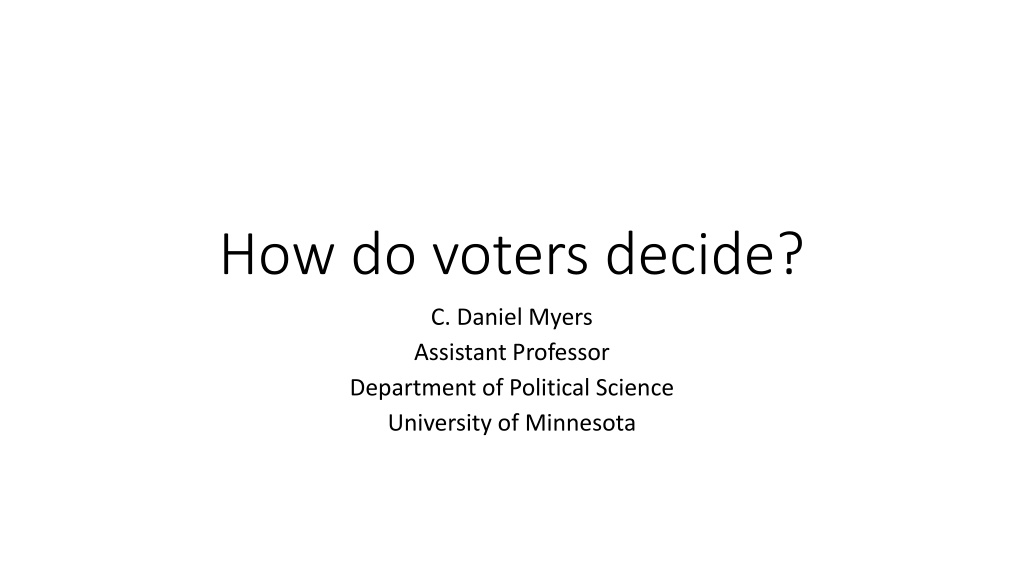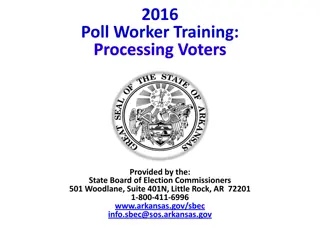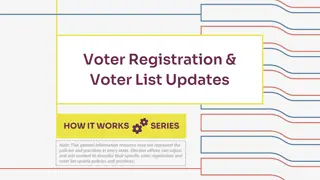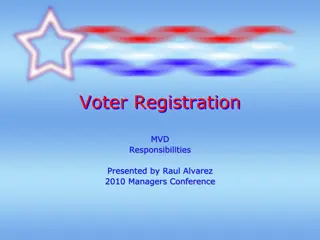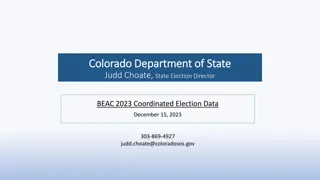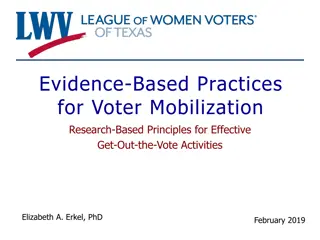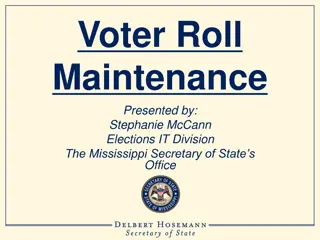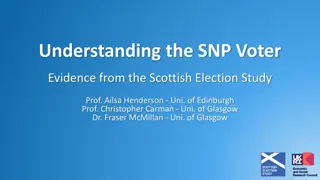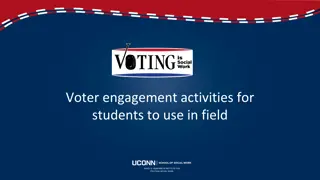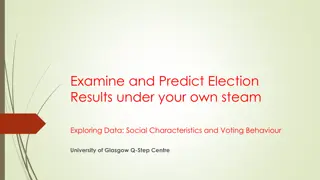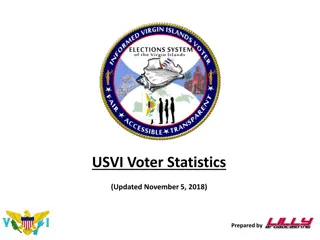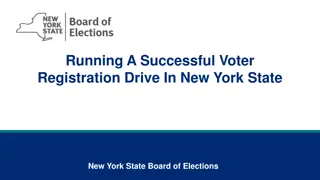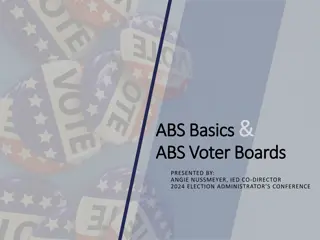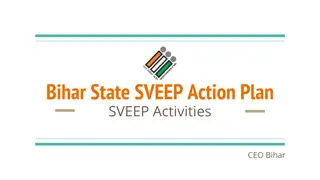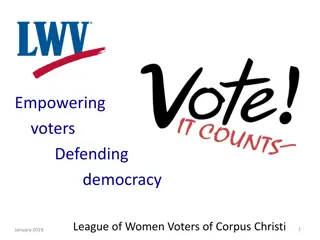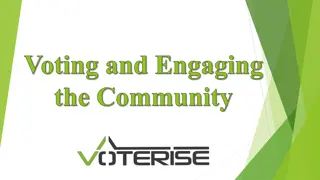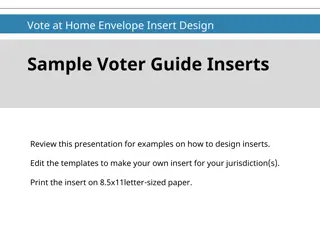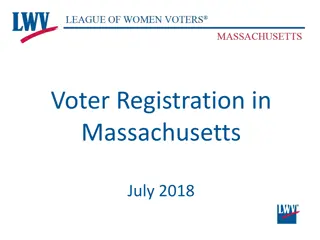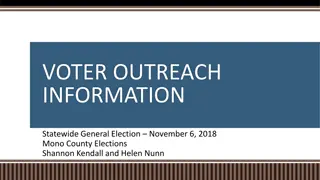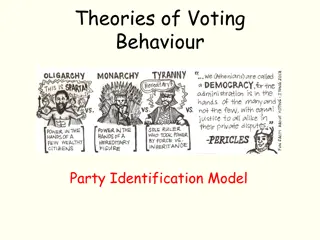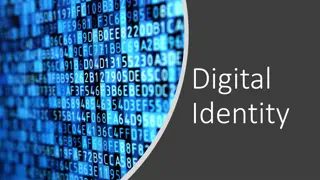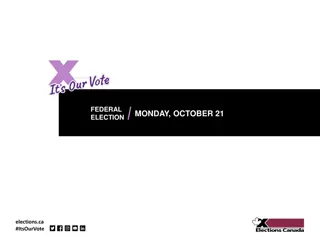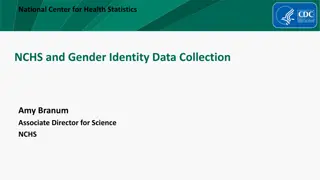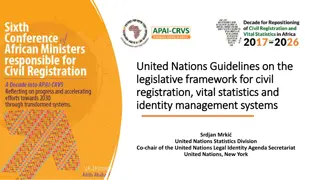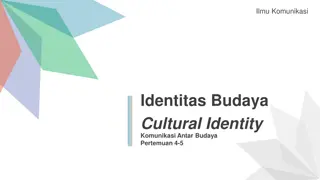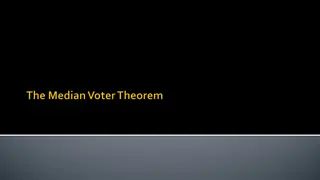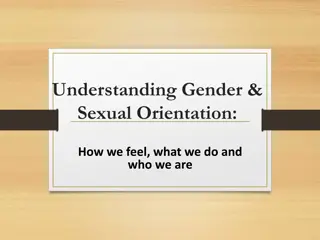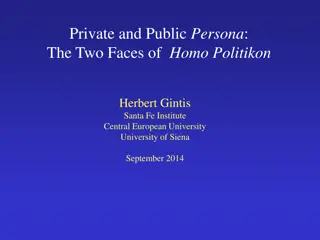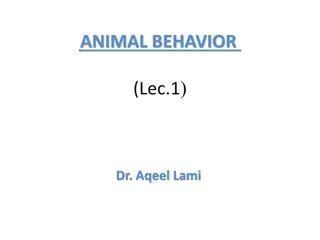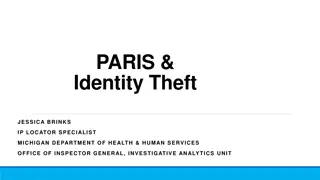Understanding Voter Behavior: Insights from Social Identity and Partisanship
Voters base their decisions on party identification and social identity, with partisan social identity playing a significant role in shaping voting behavior. Approximately 90% of Americans align with a party, highlighting the influence of partisanship on elections. Motivated information processing guides how individuals perceive and engage with political information, emphasizing the impact of personal biases on decision-making.
Download Presentation

Please find below an Image/Link to download the presentation.
The content on the website is provided AS IS for your information and personal use only. It may not be sold, licensed, or shared on other websites without obtaining consent from the author. Download presentation by click this link. If you encounter any issues during the download, it is possible that the publisher has removed the file from their server.
E N D
Presentation Transcript
How do voters decide? C. Daniel Myers Assistant Professor Department of Political Science University of Minnesota
Partisan Social Identity Social identification Provides self-concept and self-worth Defines good and bad beliefs and behaviors Structures relationships with others Protecting group s status = protecting self From threatening information From threatening out-groups
How Many Partisans? Approximately 90% of Americans identify or lean towards a party More independent leaners than before but independent leaners vote in the same was as partisans True Independents rare, mostly low knowledge/interest Partisan identification the biggest factor in voting behavior
Partisanship and Voting (Pew June 2016 Poll) 100 90 80 70 60 50 40 30 20 10 0 Republican Ind lean Rep Independent Ind lean Dem Democrat Trump Clinton Other
Motivated Information Processing
Quick Exercise Read the article about the candidate who you support or lean towards List all the thoughts that went through your mind while reading the article
Motivated Information Processing What happens when partisans encounter new information? Info good for my party? Great! Info bad for my party? Counter-argue! Counter-arguing: Searching your memory for reasons to discount information Two common counter-arguing strategies Lesser-of-two evils Issue reprioritization
Partisanship and Voting (Pew June 2016 Poll) 100 90 80 70 60 50 40 30 20 10 0 Republican Ind lean Rep Independent Ind lean Dem Democrat Trump Clinton Other
Two Kinds of Motivations Directional Motivation to reach/avoid a particular conclusion Accuracy motivations Motivation to create an accurate picture of the world
What Can Increase Accuracy Motivation? Paying people! Norms of good citizenship Issues that are personally important Partisan ambivalence
Partisan Ambivalence Having both positive and negative thoughts about your party Causes Poor performance in office, particularly economic Disagreement on key, personal issue Other behaviors that violate your image of a good political party Opens door for more accuracy-motivated thinking
Conclusion Social Identification with a party is the primary driver of voting behavior Identification drives motivated information processing, which reinforces partisan voting patterns Accuracy motivations can sometimes lead voters to process information in a way that produces voting for the other side
Questions? cdmyers@umn.edu
